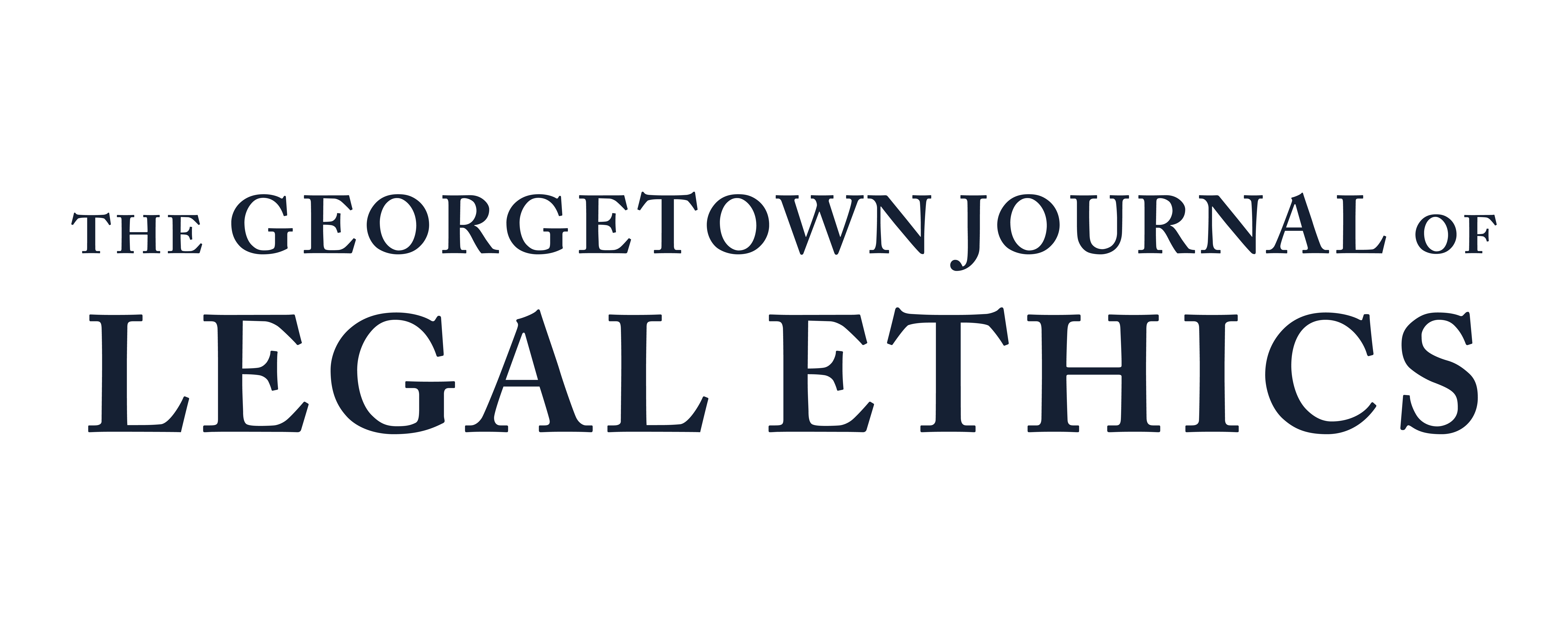The Noisy Moral Exit: Mark Lemley, Meta, and the Model Rules of Professional Conduct
April 9, 2025 by Teddy Leinbach

Setting the Stage—Mark Lemley Loudly Fires Meta as Client
In January 2025, Professor Mark Lemley took to LinkedIn to loudly and publicly announce that he had fired Meta as a client.[1] He explicitly made clear that this firing was not for the normal reasons a lawyer might fire a client—fundamental disagreement on legal strategy, failure to pay, a client insisting on fraud or crime or using the lawyer’s services to commit such, or even a breakdown of working relationship or abusive treatment by the client. Instead, he informed the public at large that he was firing Meta due to fundamental moral objections to the direction Zuckerberg was taking his company:
I have struggled with how to respond to Mark Zuckerberg and Facebook’s descent into toxic masculinity and Neo-Nazi madness… I have fired Meta as a client. While I think they are on the right side in the generative AI copyright dispute in which I represented them, and I hope they win, I cannot in good conscience serve as their lawyer any longer.[2]
Professor Lemley is famous in the copyright and academic world. He is currently the William H. Neukom Professor of Law at Stanford Law School and Director of the Stanford Program in Law, Science and Technology. His work has been cited by numerous courts, including the United States Supreme Court. He is one of the ten most cited legal scholars of all time. Lemley had been representing Meta in the corporation’s recent intellectual property case related to its AI products and development, as a partner in Lex Lumina PLLC—an elite boutique mostly made up of legal academics focused on intellectual property, First Amendment, antitrust, and related fields. His firing of Meta appears to be brought on by Zuckerberg causing the corporation to take actions such as ending diversity initiatives, and lifting content guardrails while decreasing fact checking on posts.[3]
The Model Rules of Professional Conduct and Noisy Moral Exits
These events raise the question—what Model Rules of Professional Conduct issues might be present? Do the Model Rules allow for firing a client not just for moral reasons, but loudly and publicly as well? To put the conclusion up front—yes, so long as the firing lawyer takes care not to breach the duty of confidentiality. The duties to former clients all revolve around what information the firing lawyer retains from their representation of the repugnant client. Even when the firing lawyer uses their representation and termination to loudly criticize the actions of their repugnant client, there is nothing in the rules that says representation requires completely refraining from ever harming the former client in absolutely any way.
Model Rule 1.16—Declining or Terminating Representation
The first and most obvious question—is a lawyer allowed to fire their client over issues unrelated to their representation? Yes. Model Rule 1.16 governs terminating representation relationships. Under Model Rule 1.16(b)(4), a lawyer may voluntarily withdraw from representation if “the client insists upon taking action that the lawyer considers repugnant or with which the lawyer has a fundamental disagreement.”[4]
Comment 7 to the Model Rule elaborates on Section (b), governing optional withdraw: “The lawyer may also withdraw where the client insists on taking action that the lawyer considers repugnant or with which the lawyer has a fundamental disagreement.”[5] The Model Rule and the Comment do not limit the triggering objectionable actions to only those taken in relation to the representation, case, or transaction the lawyer is assisting with. Thus, the Model Rules allow for a withdrawal such as Professor Lemley’s.
Model Rule 1.16 also provides for what actions a lawyer must take upon firing a client, no matter the reason why. Section (c) of the Model Rule requires a lawyer to comply with applicable law requiring notice to or permission of a tribunal when terminating a representation.[6] Also, Section (c) requires that the lawyer continue to represent the client if ordered to by said tribunal, regardless of good cause for termination of the relationship.[7] That being said, it is likely that a lawyer firing a repugnant client will be able to make a clear case to the tribunal that it would not be in said repugnant client’s best interests to retain counsel that objects to them on a fundamental moral basis, as the resulting friction would likely impinge upon the lawyer’s ability to zealously advocate for said repugnant client.
Model Rule 1.16(d) requires that upon termination of representation, a lawyer must take steps to the extent reasonably practicable to protect the client’s interests.[8] On the face of it, this Section might restrict a firing lawyer from publicly criticizing a repugnant client during the process of termination. However, the sentence proceeds to give examples of what type of steps are suggested: “giving reasonable notice to the client, allowing time for employment of other counsel, surrendering papers and property to which the client is entitled and refunding any advance payment of fee or expense that has not been earned or incurred.”[9] While the list is likely non exhaustive, reading the first clause in the context of the list indicates that Model Rule 1.16(d) is concerned with protecting interests directly related to the terminated representation, and not the interests of the client in general. As such, Model Rule 1.16(d) also does not raise issues with loudly firing a repugnant client.
Model Rule 1.9—Duties to Former Clients
Model Rule 1.9 governs duties owed to former clients.[10] It establishes potential conflicts of interests that remain going forward.[11] And, as is relevant to this blog post, Model Rule 1.9(c) restricts what a lawyer can do with former client information.[12]
Model Rule 1.9(c)(1) prevents lawyers from using information relating to the representation to the disadvantage of the former client, except as required or allowed by other rules in ways irrelevant here.[13] Model Rule 1.9(c)(2) prevents revelation of the same information, with similar irrelevant exceptions.[14] But notably, nothing Professor Lemley said revealed any information related to his representation of Meta, nor exploited any such information to the corporation’s detriment. In fact, in the very same LinkedIn post, he insisted that he still thought Meta’s legal position was correct: “…I think [Meta is] on the right side in the generative AI copyright dispute in which I represented them, and I hope they win….”[15] Professor Lemley did not violate Model Rule 1.9.
Conclusion
While the current Model Rules allow for Professor Lemley’s actions, it may perhaps be useful for interested lawyers, professional ethics experts, and other stakeholders to hold a policy debate as to whether this should be changed. This blog post takes no normative position on that policy debate. Such a conversation may be useful in the future. For now, it is permissible under the current model.
[1] Mark Lemley, LinkedIn (Jan. 13, 2025), https://www.linkedin.com/feed/update/urn:li:activity:7284685204676362241/ [https://perma.cc/JF6H-2YTG].
[2] Id.
[3] Kyle Jahner, Meta Lawyer Lemley Quits AI Case Citing Zuckerberg ‘Descent’ (1), Bloomberg Law (Jan. 14, 2025), https://news.bloomberglaw.com/ip-law/meta-lawyer-lemley-quits-ai-case-citing-zuckerberg-descent [https://perma.cc/N3BS-L3YW].
[4] Model Rules of Prof’l Conduct r. 1.16(b) (2018) [hereinafter Model Rules].
[5] Model Rules R. 1.16 cmt. 7.
[6] Model Rules R. 1.16(c).
[7] Id.
[8] Model Rules R. 1.16(d).
[9] Id.
[10] Model Rules R. 1.9.
[11] Id.
[12] Id.
[13] Id.
[14] Id.
[15] Lemley, supra note 1.

